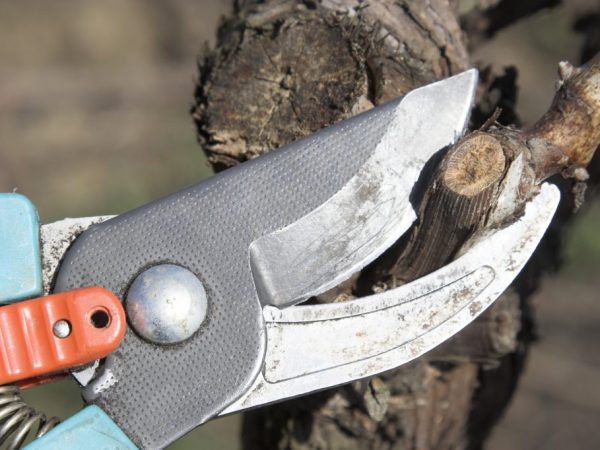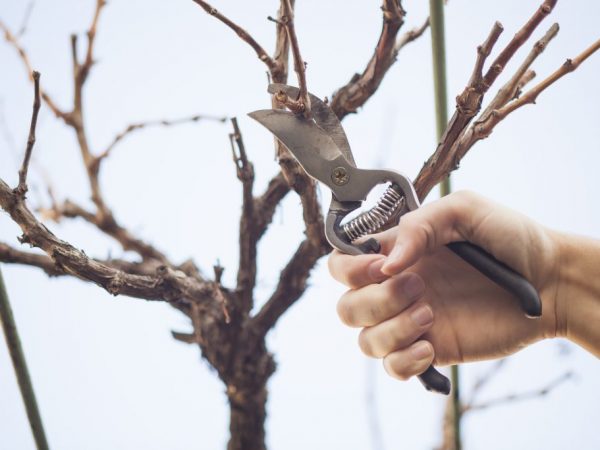How to prune grapes in Siberia
The grape is a southern plant. Thanks to the work of breeders who managed to breed frost-resistant varieties, this plant is successfully grown in Siberia and other regions with a harsh climate. Correct pruning of grapes in Siberia is important in order for the harvest to be generous.

Pruning grapes in Siberia
Why do you need autumn pruning
Pruning grapes in autumn in Siberia is an important event. In the northern regions, it is not advisable to leave pruning for the spring. Before sheltering for the winter, the vine is tied in bunches.
In the spring, when the air temperature becomes above zero, a greenhouse effect will begin to form under the waterproof shelter. If the grapes have not been pruned, then unharvested foliage, buds and dead shoots will begin to rot. Since all the branches were collected in one bunch, healthy branches will also be affected by the fungus.
Most often, such a bush dies, it is difficult to reanimate it, so you have to grow grape bushes again or wait a little to wake up the underground buds.
Autumn pruning allows you to avoid such troubles, besides, after pruning, the bushes take up much less space, it is easier to cover it. Pruning grapes in Siberia has a number of features, it differs significantly from pruning in the southern regions.
Due to the harsh climate, the vine does not always have time to ripen, in order to help the plant, pruning is carried out in two stages:
- Brightening cropping.
- Final autumn pruning.
Brightening cropping
It is necessary to clear the bush of unnecessary shoots, twigs, some foliage. Provide access to sunlight to the branches so that they have time to mature properly before the onset of cold weather. This event is held in the fall, after the first frost, from 15 to 25 September.
Especially the first pruning is needed if the summer is relatively cold or varieties with poor maturation of the vine are grown.
After harvesting, the top of the grape bush is cut, green shoots and stepchildren are removed. Then the branches are untied from the trellises and carefully placed in the aisle. After that, you need to carefully examine the plant, and remove crooked and weak branches, antennae, remaining stepsons, remove dead foliage from the bottom of the bush.
Such pruning is done for seedlings over three years old. Only the top is cut off to one-year-old bushes, and stepsons and tops are removed for two-year-old seedlings.
For frost-resistant varieties, it makes no sense to prune in two stages. The vine and the harvest have time to ripen well, so pruning is done at one time, after harvest. This period is from September 20 to October 15.
Final trimming

Remove foliage before pruning
The second stage of pruning the bushes takes place after the first frost, when freezing temperatures have killed the foliage. During this period, the movement of nutrients stops, the ideal time comes to prepare the vines for winter.
Starting the final pruning, remove all damaged foliage from the bushes. If at the first stage of trimming the procedure was carried out from top to bottom, then at the second stage the movement occurs from bottom to top. Fruit links and knots are cut off.After the grape bushes are cut off and cleared of foliage, the branches are tied in bunches, intercepting in several places with soft wire.
In this form, the beams are stacked on a substrate. Wooden beams, spruce paws can act as a substrate. This step is important as the vine should not come into contact with the soil. Otherwise, the vine can become saturated with moisture from the ground and become moldy. After the first frost, there is often a significant increase in temperature during the daytime, and this is quite enough for the reproduction of molds.
From above, the connected vines are covered with spruce, boxes, roofing material, plastic wrap and other moisture-proof materials. However, shelter made from such materials is temporary.
When grapes are covered
It is necessary to cover the plants during the period when the average daily temperature is kept within -5 ° C, in other words, when the soil is already properly frozen and it is simply not possible to stick a shovel into it. That's when the grapes are covered with insulating materials: tops, bags of tyrsa, dry foliage, etc., and covered with moisture-proof materials on top.
Do not forget that the buds on grape bushes can withstand frosts down to -17 ° C, but the roots of plants can be affected even at -8 ° C. Therefore, the roots also need to be given due attention. Snow is a good cover.
The thicker the snow layer in the region, the thinner the insulation layer is needed for shelter. The thing is that a centimeter of snow is able to keep the temperature by 1 ° C. If there is a lot of snow in the region, then it is enough to cover the plants with a waterproof material.
Conclusion
Growing grapes in Siberia is not so difficult if you follow all the rules for caring for plants. It is important to focus on the frost resistance of the varieties. Pruning grapes correctly in the fall is the key to a good harvest in the coming season.


